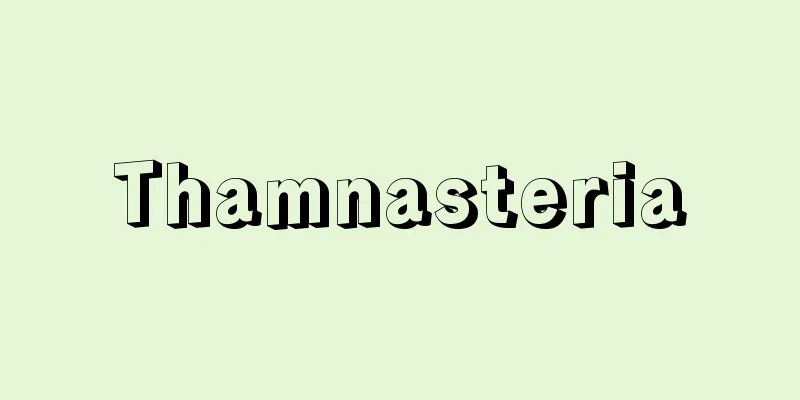Embankment

|
A structure constructed along a river channel to prevent floods from overflowing outside the channel. Levees are made by piling up earth into a trapezoidal shape and compacting it. The surface of the levee facing the river channel is called the front slope, the surface facing the land is called the back slope, and the top is called the crest. If the levee is tall, a berm may be provided on the slope. The narrow, flat area at the foot of the back slope is called a curb. The land protected by a levee is called the inside of the levee, and the area on the river channel side sandwiched between the levee is called the outside of the levee. Facing downstream, the levee on the left side is called the left bank levee, and the levee on the right side is called the right bank levee. There are continuous and discontinuous levee (kasumi levee). Levees are given names such as main levee, secondary levee (holding levee, second line levee), ring levee, training levee, back split levee, overflow levee, surrounding levee and cofferdam depending on their function. A main levee is built along the river channel, and a secondary levee is built behind the main levee in case the main levee is breached. A ring levee is built to surround a specific area to protect it from flooding. A training levee is built to adjust the direction of flow at confluences and river mouths. A back split levee is built to smooth the merging of rivers at their confluence and to separate rivers so that they do not adversely affect each other. An overflow levee is a levee that lowers part of the levee to allow floodwaters to overflow into a regulation area (flood storage basin). An enclosure levee is a levee built to surround a regulation basin (flood control basin) to prevent the water stored in the basin from spreading to the surrounding area. A closure levee is a levee built across a tributary or old river when a tributary is turned into an abandoned river or when an old river is closed off due to the excavation of a new river. To protect the levee from erosion caused by river flow, the front slope is protected with stones, concrete blocks, concrete, etc. as necessary. The parts of the front slope that are not protected are protected with vegetation such as grass and Imperata japonica. To protect the back slope from erosion caused by rainfall, vegetation such as grass and Imperata japonica is planted. Rivers that flow through cities also have levees (special levees) made of reinforced concrete and steel sheet piles. A levee built along the coast to protect against high waves is called a coastal levee, and a levee built to protect against high tides and tsunamis is called a seawall. Coastal levee and seawall are covered on three sides, with the top, front and back panels covered with concrete or asphalt. [Noboru Ikawa] [Reference items] | |©Shogakukan Library "> Training dike and back dike ©Shogakukan "> Cross-sectional structure of the embankment Source: Shogakukan Encyclopedia Nipponica About Encyclopedia Nipponica Information | Legend |
|
洪水が河道外に氾濫(はんらん)するのを防止するために、河道に沿って築造される工作物。堤防は土を台形に盛り上げ、締固めてつくられる。堤防の河道側の面を表法(おもてのり)、土地側の面を裏法(うらのり)、天辺を天端(てんば)という。堤防の高さが高い場合は、法面(のりめん)に小段(こだん)を設けることがある。裏法の堤脚部の狭い平場は犬走りという。堤防で守られる土地を堤内地、堤防で挟まれる河道側を堤外地という。下流に向かって左側の堤防を左岸堤、右側の堤防を右岸堤という。堤防には連続堤と不連続堤(霞堤(かすみてい))がある。 堤防は、機能に応じて本堤、副堤(控堤(ひかえてい)、二線堤)、輪中堤(わじゅうてい)、導流堤、背割堤(せわりてい)、越流堤(えつりゅうてい)、囲繞堤(いぎょうてい)、締切堤などの名がつけられる。本堤は河道に沿ってつくられる堤防で、副堤は本堤が破堤した場合に備えて本堤の背後につくられる堤防。輪中堤は、ある特定の地域を洪水から守るためにその地域を囲むようにつくられる堤防。導流堤は、合流点、河口などで流向を調整するためにつくられる堤防。背割堤は、河川の合流点で合流を滑らかにし、互いに悪影響を及ぼさないように河川を分離するためにつくられる堤防。越流堤は、洪水の一部を調節地(遊水地)に導水するために堤防の一部を低くして洪水を越流させるようにした堤防。囲繞堤は、調節地(遊水地)に貯留した水が周辺に拡がらないようにするために調節地を囲むようにつくられる堤防。締切堤は、派川(はせん)を廃川にしたり、新川開削に伴い旧川を締め切る際に派川や旧川を横断してつくられる堤防。 河川流による浸食から堤防を防護するために必要に応じて表法に石、コンクリートブロック、コンクリートなどの護岸を施す。表法の護岸を施さない部分は芝、チガヤなどの植生で防護する。裏法には降雨による浸食から法面を防護するために、芝、チガヤなどの植生を植える。 都市を流れる河川では鉄筋コンクリートや鋼矢板でつくられる堤防(特殊堤)もある。 海岸に沿って高波を防ぐためにつくられる堤防を海岸堤防、高潮・津波を防ぐためにつくられる堤防を防潮堤という。海岸堤防、防潮堤は、天端、表法、裏法をコンクリートやアスファルトなどで覆う三面張りにする。 [鮏川 登] [参照項目] | |©小学館ライブラリー"> 導流堤と背割堤 ©Shogakukan"> 堤防の断面構造 出典 小学館 日本大百科全書(ニッポニカ)日本大百科全書(ニッポニカ)について 情報 | 凡例 |
Recommend
Alligator mouth - Alligator mouth
〘Noun〙① = Alligator's mouth ※Nobunaga-kōki (15...
《Rain Goro》 - Ame no Goro
…Choreographer: Nishikawa Senzo IV. Commonly know...
Kinai - Kinai
In China, Korea, and Japan, the name of a special ...
Magnetic bearing - Jikijikuuke (English spelling) magnetic bearing
A bearing that uses magnetic force to support a lo...
Kampala - Kampala (English spelling)
The capital of Uganda, in eastern Africa. It is l...
Fundaco
A warehouse is a building or room used for storin...
CENTO
〘Noun〙 (Abbreviation for Central Treaty Organizati...
Household ledger - Kachucho
…It is also called a 'bungencho', a samur...
Katakura Silk Mills
…In 1895, the family formed an anonymous associat...
Varakhsha (English spelling)
The remains of a capital city (mainly from the 6th...
Rescue Association - Kyukokukai
…She was born in Wujin, Jiangsu Province. After t...
Boiling - ebullition
When a liquid vaporizes, the vapor pressure incre...
Cotta, H. von (English spelling)
...German forester. Graduated from the University...
Notharchus macrorhynchus (English spelling)
…About 30 species are found in the tropical fores...
Marine erosion
Erosion of land caused by ocean water movement suc...








![Shikamachi [town] - Shikamachi](/upload/images/67cbbc623850b.webp)
